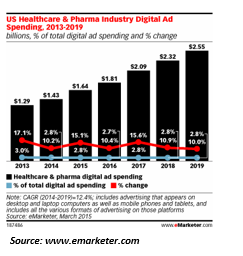The Pharmaceutical Industry is one of the most heavily regulated industries in the US. As it involves the topic of human health, it’s not surprising that any marketing activity to promote pharmaceutical products is highly scrutinized. Ensuring that your messaging doesn’t involve any false claims or miscommunicate product information is absolutely critical. This represents a big challenge for marketers. When it comes to SEO, where content really is king, this extra layer of restrictions can become a major obstacle in making a program successful.
With restrictions in mind, SEO can bring a lot of value to the pharmaceutical sites and shouldn’t be ignored. Here are some things to keep in mind if you’re working on a pharmaceutical product.
Multiple domains
In pharmaceutical marketing, healthcare providers and patient audience are typically targeted separately. Which means that you would have to deal with two separate websites, targeting patients and healthcare providers (HCPs). If you’re lucky, they may live on one domain (i.e. example.com/hcp and example.com/patient), which would be more beneficial for your domain authority. However, in most cases, these properties are hosted on completely separate domains with specific HCP or patient content.
In addition to the patient and HCP domains, many pharma brands also opt to have a separate more flexible, unbranded domain to drive awareness about a certain disease. Because this property is unbranded, there is a lot more flexibility to change or update its content. Therefore, a typical SEO program for one pharma product involves at least two to three sites.
Approval process
Keep in mind that any recommendations to update front-end website copy will have to go through legal approval process. This includes all on-page elements, such as title tags, meta descriptions, etc. Therefore, the updates will not happen overnight. In order to speed up the process, make sure that you learn as much as possible about the product and get the legal guidance from your client. In the meantime, you can work on making sure that the site is search-friendly on back-end, as technical recommendations are typically easy to push through as they don’t require legal approval.
Authoritative competition
If you perform a disease-related search query, you will rarely see a pharmaceutical brand ranking in the first three results. The top unbranded positions in Search Engine Result Pages (SERPs) are typically dominated by highly authoritative informational websites, such as WebMD or MayoClinic. This doesn’t mean that you can’t rank on the first page, however, ranking in the first three positions would be extremely challenging.
Google SERP updates
Last year, Google started updating how medical search results are displayed. For example, its Knowledge Graph panel now includes rich content on health conditions, even with downloadable PDFs. There are also “answer boxes” that show up on the first page of search results, directly pulling information from the websites. For example, you will see this “answer box” if you search for “knee pain”.

As users want to get information they’re looking for with the least amount of clicks, these updates are very helpful to them. At the same time, healthcare websites are seeing dips in their organic traffic as a result.

With all these challenges in mind, SEO and digital marketing in general represent a big opportunity for pharmaceutical companies. Recent eMarketer data shows that the digital ad spending keeps growing exponentially and is projected to grow.
As marketers, we understand the challenges and can customize smart SEO strategies that drive highly relevant traffic to Pharmaceutical sites.
Interested in learning more about SEO? Read more from our blog, View from the Charles:
How Does the New Google Ad Layout Impact SEO?
Google SERP News: Right Rail Ads are Gone
Want more information? Get more details on Charles River Interactive’s SEO and PPC service offerings or contact us today.
